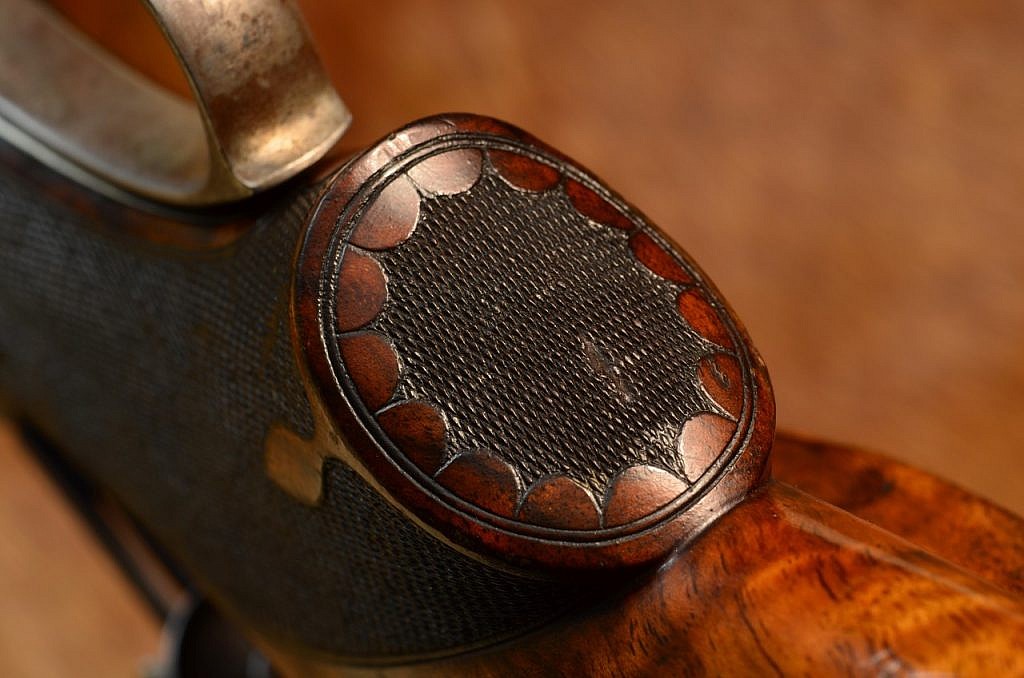
by Terry Wieland
Stevens devotees are lucky: No matter how many you own, you can never claim to have one example of everything.
We are speaking now of products of the old J. Stevens Arms & Tool Company of Chicopee Falls, Massachusetts, and in particular the fine Schützen rifles built on their Number 44 and later Number 44½ single-shot actions.

These were built during the golden age (I use the term advisedly) of Schützen in America, from 1892 until 1916, when the Stevens plant switched over completely to war production. They were made in a variety of models, numbered—confusingly—from 44 to 56, ranging from basic but fine to elaborate and very fine indeed. In fact, some authorities such as James J. Grant (author of five volumes on single-shot rifles) consider the higher grade Stevens rifles built on the 44½ action to be the best single-shot rifles ever made in America.
It sounds simple, written that way, but it was anything but. Stevens offered a number of options in terms of stock styling, grade of walnut, engraving patterns, sights, buttplates (five different ones), levers (seven of those), triggers, and barrel, and would do on a custom basis things that were not even offered in the catalogue. As a result, virtually no two are alike. At least, not that I’ve seen.
We have not even mentioned chamberings. As of 1894, they offered 22 different ones, and Stevens was also a leader in developing new cartridges. Its major claim to fame is designing and introducing the world’s all-time favorite cartridge, the .22 Long Rifle.
I have one Stevens Schützen, a Model 49 “Walnut Hill,” in .22 Long Rifle, which any sane person would conclude would be all a boy needs, but when a Model 52 popped up at Rock Island in August, I naturally had to at least look at it.
The Model 52 is also known at the “Schuetzen Jr.” It was Grant’s favorite of all the Stevens models because he particularly admired its classic loop lever. Combined with a gentle pistol grip, it gives the 52 a graceful, serpentine appearance. Other than that, the 52 is top-drawer all the way, employing drool-worthy walnut, a wide variety of engraving patterns, and usually the classic half-octagon barrel so popular at the time.

The one at Rock Island was a little unusual in that it has a full-round heavy barrel. The sights are also a little odd, especially the Beach front sight, which is usually found on lower grades or hunting rifles. After it left the factory, it was fitted with a palm rest and blocks for a target scope. (One can tell the palm rest was post-production because it encroaches on the checkering, rather than being on an island surrounded by checkering.)
